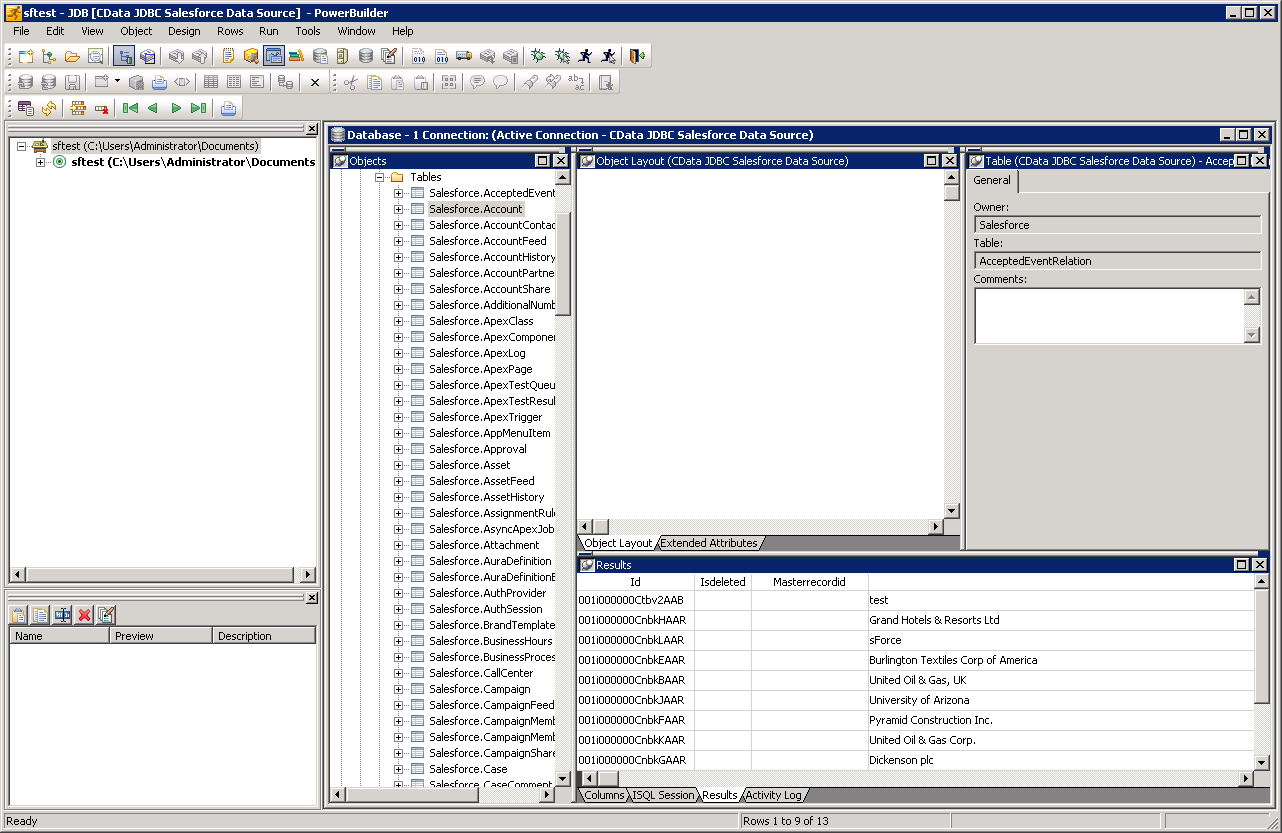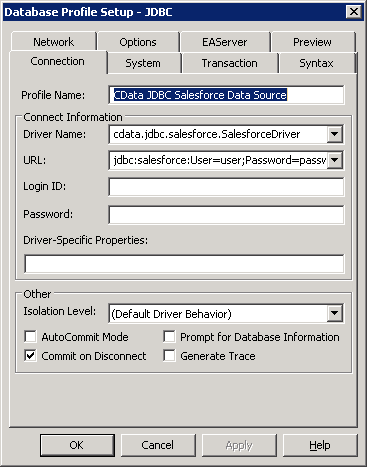Discover how a bimodal integration strategy can address the major data management challenges facing your organization today.
Get the Report →Connect to Active Directory Data from PowerBuilder
This article demonstrates how to access Active Directory data from PowerBuilder using the Active Directory JDBC Driver.
The CData JDBC Driver for Active Directory is a standards-based control that can be used from any platform or development technology that supports JDBC, including PowerBuilder. This article shows how to use the CData JDBC Driver for Active Directory in PowerBuilder.
This article shows how to create a basic PowerBuilder application that uses the CData JDBC Driver for Active Directory to perform reads and writes.
Connect to Active Directory Data from PowerBuilder
Follow the steps below to use the Database Painter tool to create a database profile based on an JDBC URL for Active Directory. You can use a database profile to save connection properties. In the Database Painter, you can graphically manipulate data as well as execute SQL queries.
Add the driver JAR to the PowerBuilder classpath. Set the CLASSPATH system environment variable to the path to the driver JAR, located in the lib subfolder of the installation directory.
Note: If you are using PowerBuilder Classic, you can also add the path to the driver JAR by clicking Tools -> System Options -> Java.
- Click Tools -> Database Painter.
- Right-click the JDBC node and click New Profile.
- In the Database Profile Setup dialog, enter the following:
- Profile Name: Enter a user-friendly name for the profile.
- Driver Name: Enter the class name of the driver, cdata.jdbc.activedirectory.ActiveDirectoryDriver
- URL: Enter the JDBC URL.
To establish a connection, set the following properties:
- Valid User and Password credentials (e.g., Domain\BobF or cn=Bob F,ou=Employees,dc=Domain).
- Server information, including the IP or host name of the Server, as well as the Port.
BaseDN: This will limit the scope of LDAP searches to the height of the distinguished name provided.
Note: Specifying a narrow BaseDN may greatly increase performance; for example, cn=users,dc=domain will only return results contained within cn=users and its children.
Built-in Connection String Designer
For assistance in constructing the JDBC URL, use the connection string designer built into the Active Directory JDBC Driver. Either double-click the JAR file or execute the jar file from the command-line.
java -jar cdata.jdbc.activedirectory.jarFill in the connection properties and copy the connection string to the clipboard. A typical JDBC URL is below:
jdbc:activedirectory:User=cn=Bob F,ou=Employees,dc=Domain;Password=bob123;Server=10.0.1.2;Port=389;
![The JDBC data source defined in the Database Profile Setup dialog. (Salesforce is shown.)]()
- To view and modify a table, right-click a table and then click Edit Data -> Grid.

Using Active Directory Data with PowerBuilder Controls
You can use standard PowerBuilder objects to connect to JDBC data sources and execute queries. The following example shows how to retrieve Active Directory data into a DataWindow. You can add the following code to the open method:
SQLCA.DBMS = "JDBC"
SQLCA.AutoCommit = False
SQLCA.DBParm = "Driver='cdata.jdbc.activedirectory.ActiveDirectoryDriver',URL='jdbc:activedirectory:User=cn=Bob F,ou=Employees,dc=Domain;Password=bob123;Server=10.0.1.2;Port=389;";
CONNECT USING SQLCA;
dw_user.SetTransObject(SQLCA);
dw_user.Retrieve();







